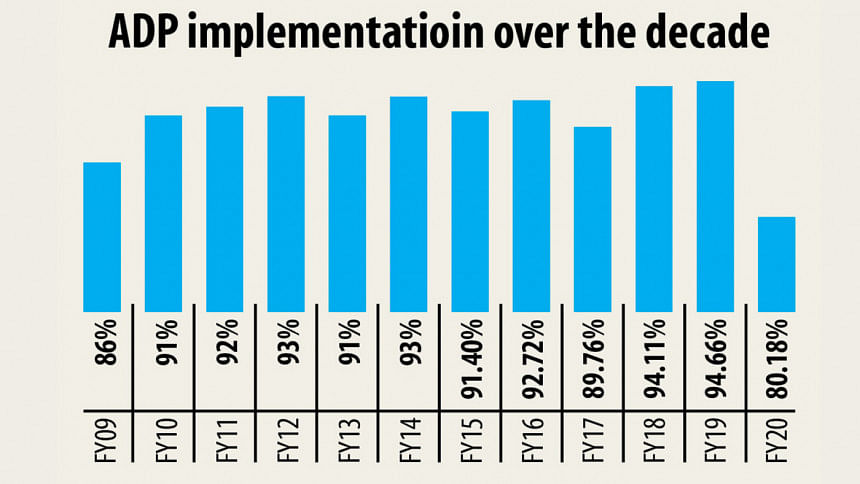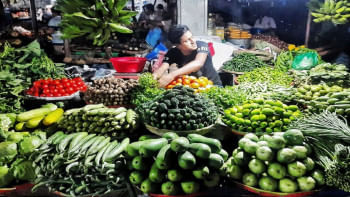Decent development spending amid extenuating circumstances

Sometimes, one just needs to resign to reality.
Bangladesh's development expenditure fell to a 27-year low in the just-concluded fiscal year.
But, unlike in previous years, a sense of indignation over yet another lacklustre implementation of the annual development programme seems misplaced this time.
Development activities almost halted after the government was forced to implement a countrywide shutdown from March 26 to rein in the rising cases of coronavirus infections, causing ADP implementation to virtually collapse in the following two months, when spending typically heats up to show a flattering result for the full year.
ADP expenditure fell 38.79 per cent to Tk 16,581 crore in May and 40.27 per cent to Tk 8,136 crore in April.
But implementation was ramped up in June when the government lifted the shutdown. About Tk 45,579 crore was spent last month, down 3.13 per cent year-on-year.
Subsequently, the ministries and divisions ended up spending Tk 161,000 crore in fiscal 2019-20, which was 80.18 per cent of the total allocation, said a senior official of the Implementation Monitoring Evaluation Division (IMED) of the planning ministry.
This was the lowest ADP implementation rate since fiscal 1993-94 and the second-lowest since the 1980s, for which official statistics were available immediately.
The previous lowest was recorded in fiscal 1992-93 when the government managed to spend 80 per cent of the allocation, according to the Bangladesh Economic Review 2004.
Only twice in the last four decades, Bangladesh's ADP execution was below 90 per cent.
The lower ADP implementation rate was expected given the extraordinary situation brought on by the pandemic, said Ahsan H Mansur, executive director of the Policy Research Institute of Bangladesh.
What surprised him was that it was still a respectable 80 per cent. "It could have been much lower."
ADP implementation rate was 45.08 per cent in the first 11 months of the fiscal year and there had been little work in April and May.
"The figure rose significantly on the back of the implementation in June. This is surprising," Mansur said.
The IMED data is not prepared based on the actual work done. Rather, it is prepared on the disbursement of the funds, he added.
Expenditure for the large projects had been almost on hold from March, let alone small projects, said Zahid Hussain, a former lead economist of the World Bank Dhaka office.
"So, the slowdown has been expected."
Because of the highly contagious disease, people were not keen to return to work, particularly in the construction sector, he said.
The slowing trend of development spending may continue in the current fiscal year as well since the cases of coronavirus infections have been on the rise.
It is also uncertain when the pandemic would peter out, not just in Bangladesh but in also most of the world.
Bangladesh is the 17th worst-affected country in the world in terms of the number of cases.
Some 3,163 people tested positive for COVID-19 in the last 24 hours, said the Directorate General of Health Services yesterday. This took the coronavirus caseload to 190,057 and the death toll to 2,424.
The uncertainty around the health crisis prompted the government to divert funds to meet the immediate needs for propping up the economy that was caving under the burden of the global pandemic.
The ADP for the new fiscal year is Tk 205,145 crore, up only 6.33 per cent from last year's revised development budget.
Health, agriculture and employment creation have given priority while allocating resources for the ADP.
A critical element will be the utilisation of foreign aid through faster-paced ADP project implementation with good governance, said the Centre for Policy Dialogue recently.


 For all latest news, follow The Daily Star's Google News channel.
For all latest news, follow The Daily Star's Google News channel. 



Comments